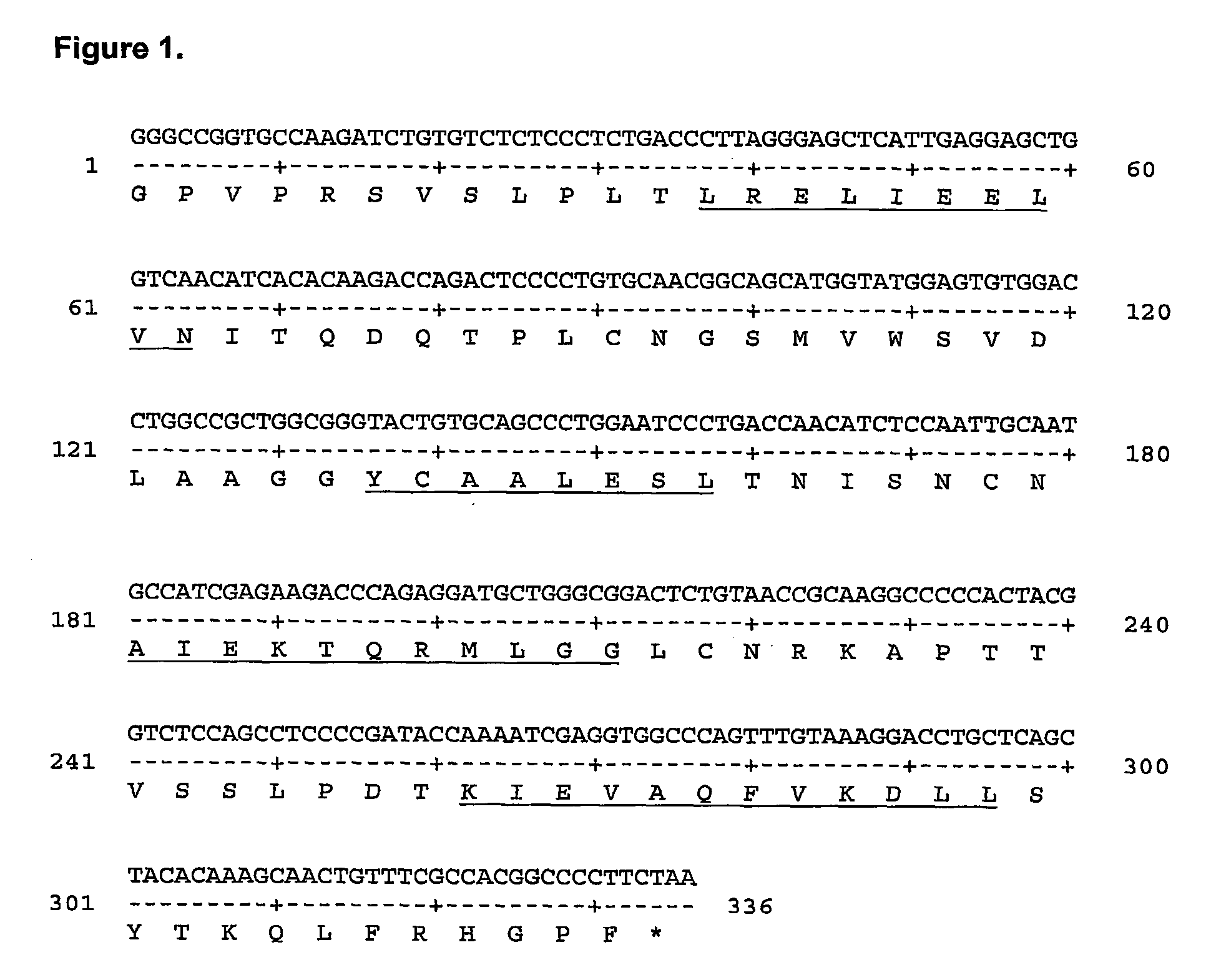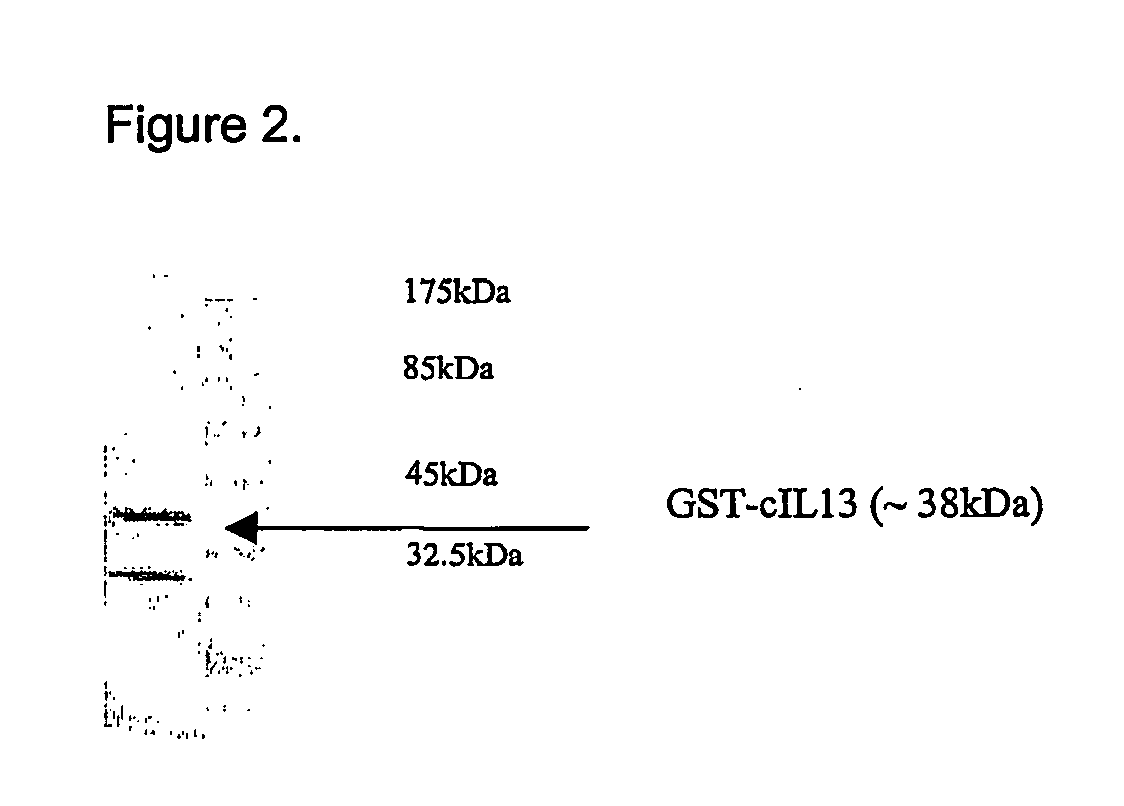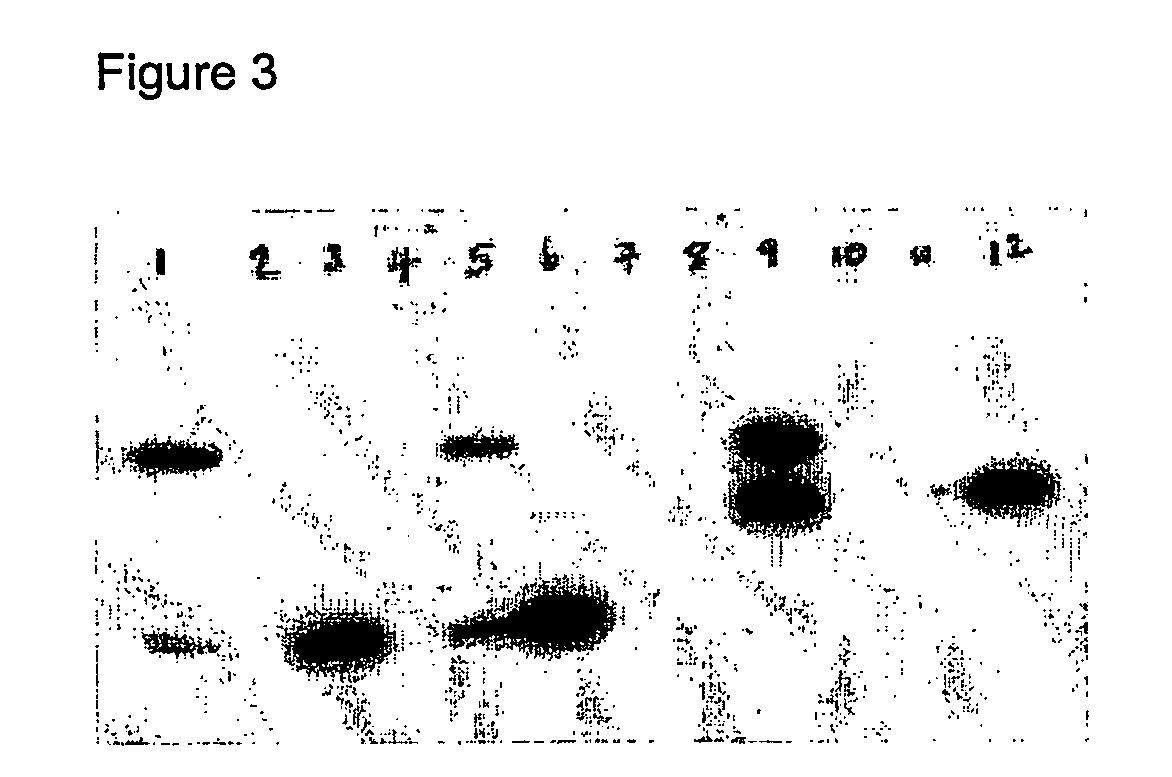Vaccine
a technology of pulmonary disease and vaccine, applied in the field of vaccine, can solve the problems of numbing of the airways, difficulty in breathing, wheezing, chest tightness and coughing, etc., and achieve the effect of minimal cross-reactivity or neutralising capacity
- Summary
- Abstract
- Description
- Claims
- Application Information
AI Technical Summary
Benefits of technology
Problems solved by technology
Method used
Image
Examples
examples
1. Design of a Vaccine Against Murine IL-13
[0103] IL-13 belongs to the SCOP (Murzin et al, 1995, J Mol Biol 247:536-540) defined 4-helical cytokines fold family. Individual members of this fold superfamily are related structurally, but are difficult to align at the sequence level. The 3D structure of IL-13 has not yet been determined, but structures have been generated for a number of other 4-helical cytokines. Protein multiple sequence alignments were generated for IL-13 orthologues, and also for a number of other cytokines exhibiting this fold where the structure of at least one member had been determined (IL-4, GM-CSF, IL-5 and IL-2). Secondary structure predictions were performed for the IL-13 protein multiple sequence alignment using DSC (King and Sternberg, 1996, Prot Sci 5:2298-2310), SIMPA96 (Levin, 1997, Prot Eng 7:771-776) and Pred2ary (Chandonia and Karplus, 1995, Prot Sci 4:275-285). The individual cytokine protein multiple sequence alignments were aligned to each othe...
example 2
Immune Response to gst-cIL-13 is Specific for Mouse IL-13 and does not Cross React with Mouse IL-4
[0129] As mouse IL-13 is structurally similar to mouse IL-4, sera from a GST-cIL-13 immunised mouse (that had been shown to contain high titre anti-mouse IL-13 autoantibodies) was analysed for cross-reactivity to mouse IL-4 using an anti-mouse IL-4 ELISA and an in vitro mIL-4 neutralisation bioassay.
2.1 Anti-Mouse IL-4 ELISA.
[0130] 96-well Maxisorp plates were coated with anti-mouse IL-4 monoclonal antibody (Cat. No. MAB404, R+D Systems) in carbonate-bicarbonate buffer overnight at 4° C. Plates were then blocked with 3% BSA / TBST for 1 hour at RT, washed 3 times in TBST, and incubated with mouse IL-4 (Cat. No. 404-ML-005, R+D Systems) for 1 hour at RT. After washing, plates were incubated with mouse sera for 1 hour at RT, washed again and incubated with HRP conjugated anti-mouse IgG polyclonal antibody (Cat. No. A-9309, SIGMA). Following further washing, the plates were developed wit...
example 3
Immunogenicity Profile of GST-cIL-13 in Combination with Various Adjuvants
3.1 Immunisation Protocol.
[0150] GST-cIL-13 was used as an immunogen to induce the formation of auto-antibodies against mouse IL-13 in Balb / c mice. Female mice aged 6-8 weeks were given one injection of approximately 100 μg protein in adjuvant. This was followed by four booster immunisations each consisting of 50 μg protein in adjuvant (See below for immunogen+adjuvant formulations). Each treatment group contained 5 animals, immunised according to the protocol in the table below.
[0151] Serum samples were obtained by venepuncture of the tail vein at the timepoints specified. After clarification by centrifugation, the samples were assayed by ELISA for the presence of specific IgG responses to mouse IL-13.
GroupImmunisationAGST-cIL-13 in AS03 i / mBGST-cIL-13 in Alum i / pCGST-cIL-13 in ‘ImmunEasy’ i / mDGST-cIL-13 in CFA / IFA s / cEGST-cIL-13 in PBS s / cFNo immunisationsDayTreatment−7Pre-bleed0Primary immunisation211...
PUM
| Property | Measurement | Unit |
|---|---|---|
| temperature | aaaaa | aaaaa |
| temperature | aaaaa | aaaaa |
| concentration | aaaaa | aaaaa |
Abstract
Description
Claims
Application Information
 Login to View More
Login to View More - R&D
- Intellectual Property
- Life Sciences
- Materials
- Tech Scout
- Unparalleled Data Quality
- Higher Quality Content
- 60% Fewer Hallucinations
Browse by: Latest US Patents, China's latest patents, Technical Efficacy Thesaurus, Application Domain, Technology Topic, Popular Technical Reports.
© 2025 PatSnap. All rights reserved.Legal|Privacy policy|Modern Slavery Act Transparency Statement|Sitemap|About US| Contact US: help@patsnap.com



